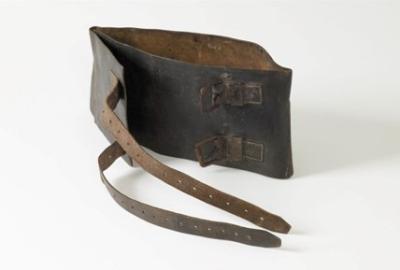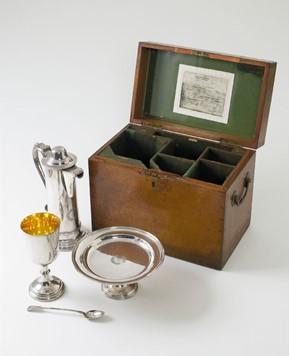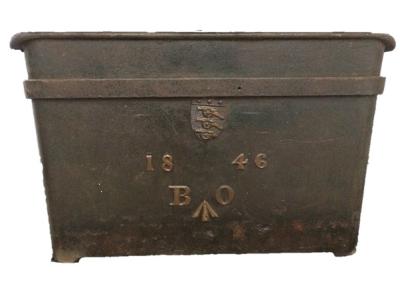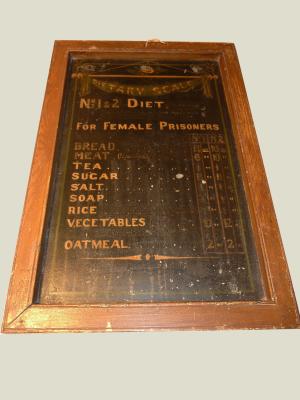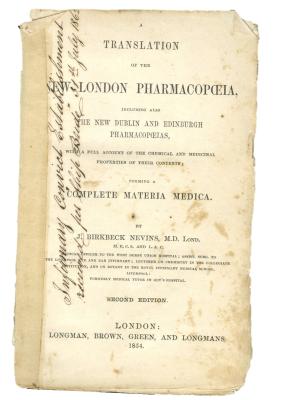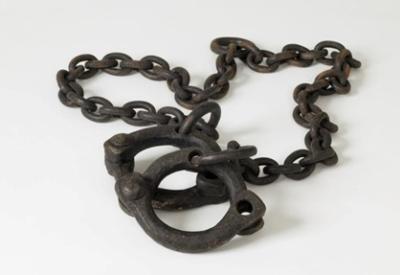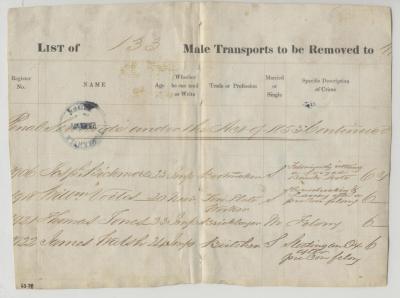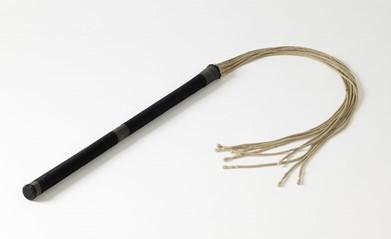WHIP
1900 - 1943Long, thin, cylindrical, wood and cord whip. Long, cylindrical wooden handle and nine leather cord lashes attached to one end. Handle has nine parallel slots cut into its surfaces with each slot running entire length of handle and lashes of cord inserted into consecutive slots. Lashes are plaited and bound by white thread at ends. Handle bound in black felt material sewn with black cotton thread and neatly bound by grey thread in three places, symmetrically spaced placed along the shaft.
In February 2001, former Senior Prison Officer David Campbell advised that this whip was of the type used to administer corporal punishment at Fremantle Prison from c1900 until 1943, when the last sentence of this punishment was carried out at Fremantle on prisoner Sid Sutton.
Details
Details
From the early days of the Convict Establishment, it was not uncommon for prisoners to be sentenced to receive lashes for breaches of discipline. The most serious offence being escaping, or attempting to escape, from legal custody.
A prisoner being flogged was secured to the flogging triangle, their legs tied to the base and their hands to the top. Their back was stripped bare and protective leather belts were buckled around their waist to protect their kidneys, and around their neck to protect their arteries.
Depending on their crime, a prisoner could receive up to 100 lashes. Once strapped to the flogging post, the prisoner received punishment in the form of flogging or birching. Flogging was undertaken with the cat of nine tails, a whip with nine knotted strands or cords. Birching used a bundle of long birch twigs bound together by a cord. After the lashes were administered, salt or brine would then be applied to the wounds to cleanse them and help them heal.
The flagellator was often a Prison Warder, sometimes specially appointed, who, for an agreed fee, was required to administer corporal punishment when necessary. Floggings were usually carried out with between six and ten prison officers present, together with those prisoners for whom it was thought witnessing the punishment would provide a warning and set an example. A medical officer was always in attendance, and they had the authority to stop the punishment if deemed medically necessary. However, if the punishment was stopped for medical reasons the sentence was not discharged, but rather resumed again once the prisoner had sufficiently recovered.
By 1940, regulations regarding the use of flogging at Fremantle Prison stated that, “the number of strokes must not exceed twenty five, and in the case of an offender under the age of eighteen must not exceed twelve, and the instrument must be either a birch rod cane, or the instrument commonly called a cat, which shall be made of leather or cord without any metallic substance woven therewith; provided that the cat shall not be used in the case of an offender under eighteen years of age.”
The last occurrence of a flogging being carried out as a prescribed punishment in Western Australia was administered at Fremantle Prison on 21 June 1943, at 9am. In this instance a prisoner, sentenced to receive 25 lashes of the cat, received 17 before the medical officer intervened. The last birching to be carried out at Fremantle Prison was administered on 20 August 1962, when a prisoner received 12 stokes. Corporal punishment and hard labour were not officially abolished in Western Australia until the Criminal Law Amendment Act (No. 2) 1992, which came into effect from 6 January 1993.
Open in Google Maps
Nearest geotagged records:
- PHOTOGRAPH OF CATHOLIC CHAPEL AFTER 1988 RIOT (0km away)
- AD REM PRISON NEWSLETTER (0km away)
- CONCERT PROGRAMME (0km away)
- IMAGE OF CHRISTMAS FESTIVITIES (0km away)
- ENTRANCE TO FREMANTLE PRISON (0km away)
- IMAGE OF SALLY PORT (0km away)
- IMAGE OF THE MAIN CELL BLOCK (0km away)
- GATEHOUSE/RECEPTION (0km away)
- IMAGE OF BAKING BREAD (0km away)
- PHOTOGRAPH OF PRISON LIBRARY (0km away)
Nearby places: View all geotagged records »
Other items from Fremantle Prison
- PROTECTIVE BELT
- COMMUNION SET STORAGE CASE
- METAL TUB WITH BOARD OF ORDNANCE ARMS 1846
- BODY BELT
- STRAP WITH BUCKLE
- APOTHECARY BEAM SCALES
- FRAMED PRINTED NOTICE
- PUNISHMENT BIRCH
- BOOK PHARMACOPOEIA
- SET OF SHACKLES
- REMNANT OF PAGE FROM SHIP'S REGISTER
- CONVICT DEPARTMENT WESTERN AUSTRALIA SCALE OF RATIONS
